|
"How many mega pixels does your camera have?" When discussing cameras, the response to this frequently asked question is given a great deal of weight. It seems that the number of mega pixels on the CCD has become one of the main yardsticks by which a camera is measured in popularity and efficiency, but is it really that important? Whilst it is evident that high end cameras will produce better quality images and much greater overall functionality, I wonder whether it is possible that we are being blinded by science to the extent
that our basic pleasure in the simple act of clicking the shutter button is becoming diluted.
In considering my own personal journey along the road of digital photography, it seems to me that I am at 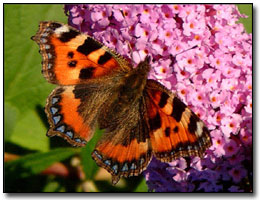 a point where there is the danger that I could sacrifice the enjoyment of shooting digitally as in the early days, (four years ago), for the sake of a perfectionist quest for high quality images that are more about showing the camera's capabilities than the accomplishments of the photographer.
a point where there is the danger that I could sacrifice the enjoyment of shooting digitally as in the early days, (four years ago), for the sake of a perfectionist quest for high quality images that are more about showing the camera's capabilities than the accomplishments of the photographer.
One of the first pictures I took was with a Fuji 4700 - and I could not believe the fantastic detail revealed by that simple, auto, 'point and shoot' picture.
This image alone inspired me to buy a second-hand Ricoh RDC-7, a much under-rated little camera that gave me an enormous amount of pleasure. With this camera, I explored the new world of close up photography, and was immensely impressed with my new prowess behind the lens; at this time I was pretty much unaware of the technicalities of white balance and ISO and certainly would not have entertained
the idea of manual focussing. This photograph of the pink rose "new dawn" was a single grab shot and it
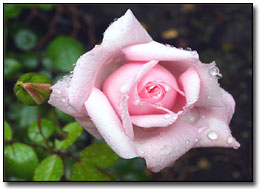 remains one of my favorite pictures. Yes, I can see the technical shortcomings of this image now, but at the time it represented the pinnacle of my achievement.
remains one of my favorite pictures. Yes, I can see the technical shortcomings of this image now, but at the time it represented the pinnacle of my achievement.
I graduated to the more complex Canon S50 and began to learn a little more about apertures, white balance and so on. This camera remains a very useful 'peashooter', being small and light enough to carry easily, but having sophisticated abilities; it was quite a leap in terms of functions and image quality and I
found it particularly useful when exploring the settings that affect the depth of field in close-up
photography. I found a kind of magic formula, that of the AV macro setting, which gave good results
across the board.
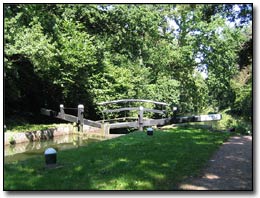 As I gained in knowledge and experience I began to think about extending my photographic repertoire still further with an SLR and, after much research and deliberation - and due in no small part to the quality of images I saw on Outdoor Eyes - I eventually decided on the Canon 300D.
As I gained in knowledge and experience I began to think about extending my photographic repertoire still further with an SLR and, after much research and deliberation - and due in no small part to the quality of images I saw on Outdoor Eyes - I eventually decided on the Canon 300D.
I have to say that my first sessions with the camera left me feeling quite disheartened. Firstly, the additional weight of the camera meant that many of my pictures were out of focus, and I began to understand the need for a tripod. Additionally, the complexity of the camera's innards meant that any photographs taken on anything other than the preset settings were a hit and miss affair; sometimes I had the lighting wrong, sometimes the DOF, perhaps the aperture and/or white balance would be incorrect. Initially there seemed to be so much to remember to check before I took a shot that the spontaneity of photography had all but disappeared. It was like trying to perfect a recipe without having all the
ingredients, and to persevere required a fair amount of dedication.
With the passage of time and many practice sessions (such as 50+ shots of the same flower in a vase!) I began to feel there was a better two way interchange between myself and the camera, and I started to achieve images that satisfied my parameters.
Spurred on by this, I recently acquired two additional lenses, a Sigma 70-300mm and a dedicated Canon
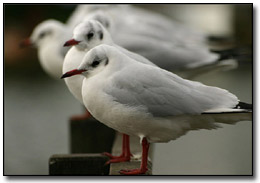 Macro lens, two separate learning curves in themselves, but both providing excellent results; eventually and still sporadically. However, to return to the original premise regarding 'mega pixel mania', I find that these days, obtaining a good image with all the correct settings and resultant clarity, almost invariably takes me several attempts. A recent frustrating foray out to the woods to capture some photographs of bluebells netted me a huge number of images taken with the use of lenses various, numerous settings, monopod, beanbag etc. And guess what? Out of the 60+ shots cluttering up the CF card there were but one or two with which I was really happy.
Macro lens, two separate learning curves in themselves, but both providing excellent results; eventually and still sporadically. However, to return to the original premise regarding 'mega pixel mania', I find that these days, obtaining a good image with all the correct settings and resultant clarity, almost invariably takes me several attempts. A recent frustrating foray out to the woods to capture some photographs of bluebells netted me a huge number of images taken with the use of lenses various, numerous settings, monopod, beanbag etc. And guess what? Out of the 60+ shots cluttering up the CF card there were but one or two with which I was really happy.
If I compare this experience to my original photo shoots with the Ricoh, it serves to emphasize to me that the high end of the market may ultimately be more satisfying, but in real terms it is not so much fun.
I made a conscious decision this weekend when I was visiting Brighton, Sussex, to take the S50 with me
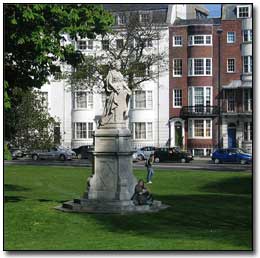 rather than all my other kit, and during the course of the day I snapped about ten images. You will not, I think, be surprised to learn that all the images from this little exercise were of good, acceptable quality, and proved to me that a return to basics is sometimes called for. In fact, the photograph I show here was taken through the window of the top deck of a bus! Occasionally, I yearn to use my long since sold-on Ricoh again, just to see what kind of images I would achieve four years down the line in terms of photographic experience.
rather than all my other kit, and during the course of the day I snapped about ten images. You will not, I think, be surprised to learn that all the images from this little exercise were of good, acceptable quality, and proved to me that a return to basics is sometimes called for. In fact, the photograph I show here was taken through the window of the top deck of a bus! Occasionally, I yearn to use my long since sold-on Ricoh again, just to see what kind of images I would achieve four years down the line in terms of photographic experience.
Much as I love and embrace the technology of digital photography, I think it is worth bearing in mind the adage that sometimes, simple is best, and to lose sight of this may represent the loss of the very personal, individual interaction between self and camera that, as photographers, is uniquely ours.
|

